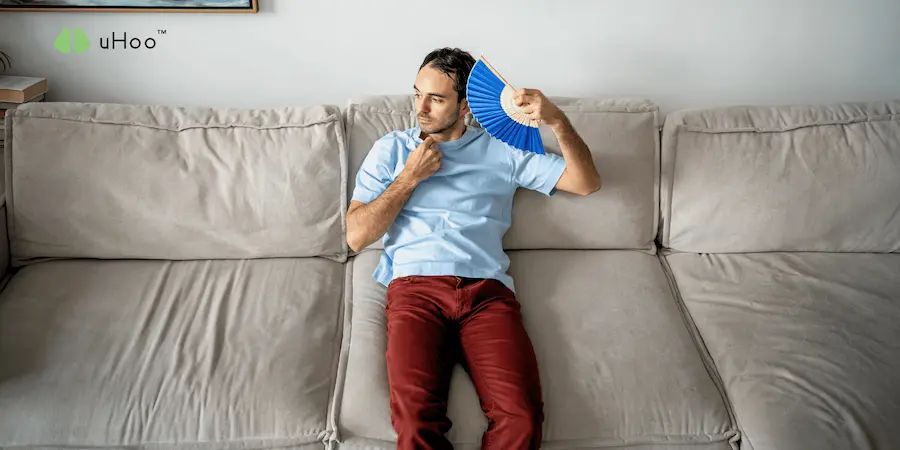When the summer sun beats down and temperatures soar, most of us instinctively seek refuge indoors, cranking up the air conditioning. We often assume that once inside, we’re safely shielded from the outdoor pollutants. However, this isn’t always the case, especially when it comes to ground-level ozone.
During heatwaves, high ozone risk isn’t solely an outdoor environmental problem. It can become a significant concern right inside your own home.
Here’s a deeper dive into why high heat significantly increases your high ozone risk indoors:
- Ozone Infiltration: The Unseen Invader: Ground-level ozone, a harmful respiratory irritant and a key component of smog, forms rapidly and in higher concentrations during hot, sunny conditions. While your home offers some protection, it’s not a hermetically sealed bubble. Ozone, being a gas, can and will seep into your home through various pathways:
- Cracks and Gaps: Even minute cracks in foundations, around windows and doors, or through poorly sealed vents can act as entry points for outdoor ozone.
- Ventilation Systems: HVAC systems that draw in fresh outdoor air can bring ozone with them, especially if they lack specialized filters designed for gaseous pollutants.
- Open Doors/Windows: Brief openings of doors or windows, even for a few seconds, can allow a significant amount of ozone-rich air to enter, which then gets trapped indoors.
- “Stack Effect”: In taller buildings, differences in temperature and pressure between indoors and outdoors can create a “stack effect,” drawing outdoor air (and ozone) into lower levels.
- AC Filters Don’t Always Capture Ozone: While your air conditioning unit is excellent for cooling and dehumidifying, standard HVAC filters (even HEPA filters) are primarily designed to capture particulate matter (like dust, pollen, mold spores). They are generally ineffective at removing gaseous pollutants like ozone. This means that while your AC cools your home, it might not be fully protecting you from high ozone risk unless you have a specialized activated carbon filter installed, which is less common in residential setups.
- Indoor Sources (Minor, but Contributing): While the vast majority of indoor ozone comes from outdoors, some specific indoor devices can contribute to the problem:
- Ozone-Generating Air Purifiers/Ionizers: Crucially, some older or cheaper “air purifiers” on the market explicitly generate ozone as a cleaning mechanism. These devices should be avoided at all costs, as they directly introduce a harmful pollutant into your home.
- Laser Printers and Photocopiers: These office machines, especially when heavily used or in poorly ventilated spaces, can emit small amounts of ozone as a byproduct of their operation. While usually minor, on days with high outdoor ozone, even these small contributions can push indoor levels into an unhealthy range.
How to Proactively Lower Your High Ozone Risk Indoors
- Always Check Outdoor Air Quality with uHoo: Make it a habit to check your uHoo app for local outdoor air quality forecasts, especially on hot days. Knowing when outdoor ozone is predicted to be high is your first line of defense.
- Seal Your Home Tight During High Ozone Risk Alerts: This is your most critical action. When outdoor ozone levels are high, keep all windows and doors firmly closed. Inspect for and seal any significant cracks or gaps in your home’s envelope.
- Rely on Your HVAC System (with Clean Filters): Use your air conditioning to keep your home cool and to circulate indoor air. While it won’t remove all ozone, a well-maintained system with clean filters (and ideally a higher MERV rating) can help improve overall air quality and prevent the need for outdoor ventilation.
- Strictly Avoid Ozone-Emitting Devices Indoors: If you have an air purifier, verify it is ozone-free. If you rely heavily on laser printers, ensure the area is well-ventilated (when outdoor ozone is low) or consider alternative technologies.
- Monitor with uHoo for Definitive Proof: uHoo provides real-time data on indoor ozone levels. This is invaluable. If outdoor ozone is high and you’ve taken precautions, your uHoo can confirm if your efforts are effective. If you still see elevated indoor ozone, it tells you that infiltration is occurring, allowing you to take further immediate action to mitigate your high ozone risk indoors.
Understanding the direct link between high heat and high ozone risk indoors is paramount. By taking proactive measures informed by your uHoo monitor, you can significantly reduce your family’s exposure and breathe easier during even the most intense heatwaves.



